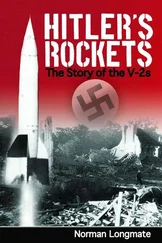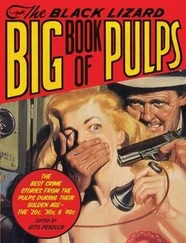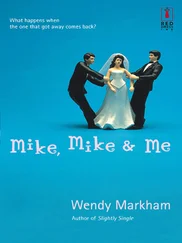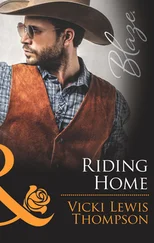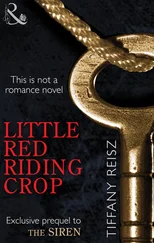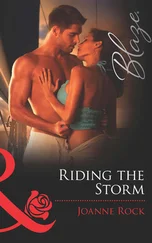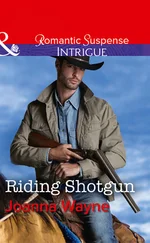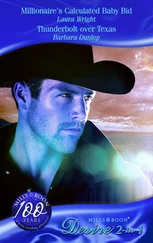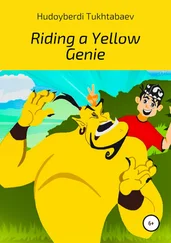Mike Mullane - Riding Rockets
Здесь есть возможность читать онлайн «Mike Mullane - Riding Rockets» весь текст электронной книги совершенно бесплатно (целиком полную версию без сокращений). В некоторых случаях можно слушать аудио, скачать через торрент в формате fb2 и присутствует краткое содержание. Жанр: Старинная литература, на английском языке. Описание произведения, (предисловие) а так же отзывы посетителей доступны на портале библиотеки ЛибКат.
- Название:Riding Rockets
- Автор:
- Жанр:
- Год:неизвестен
- ISBN:нет данных
- Рейтинг книги:3 / 5. Голосов: 2
-
Избранное:Добавить в избранное
- Отзывы:
-
Ваша оценка:
- 60
- 1
- 2
- 3
- 4
- 5
Riding Rockets: краткое содержание, описание и аннотация
Предлагаем к чтению аннотацию, описание, краткое содержание или предисловие (зависит от того, что написал сам автор книги «Riding Rockets»). Если вы не нашли необходимую информацию о книге — напишите в комментариях, мы постараемся отыскать её.
Riding Rockets — читать онлайн бесплатно полную книгу (весь текст) целиком
Ниже представлен текст книги, разбитый по страницам. Система сохранения места последней прочитанной страницы, позволяет с удобством читать онлайн бесплатно книгу «Riding Rockets», без необходимости каждый раз заново искать на чём Вы остановились. Поставьте закладку, и сможете в любой момент перейти на страницу, на которой закончили чтение.
Интервал:
Закладка:
With the dream talk circling the fire I looked into the star-spangled night and felt supremely happy…but only for a moment. I was too seasoned not to know there would be tears on this journey. Some at this very campfire would die as astronauts. Perhaps I would, I thought. Perhaps in one of NASA’s training jets. Perhaps on a space shuttle. It wasn’t hearing the Apollo I voice tapes those many months ago that now brought on this melancholy. It was a much more intimate experience with death in the sky.
Christmas season, 1972. I was twenty-seven years old, stationed in England and flying in the backseat of RF-4Cs as part of the Allied Forces staring down the Russian threat. Jim Humphrey and Tom Carr were in the squadron planning area. We were kibitzing over coffee as they put the finishing touches on their training maps. I handed Jim my BX cigarette ration cards. I didn’t smoke and he did. He thanked me. Then he and Tom headed for their plane. It was the last time I would see them alive. Shortly after takeoff their Phantom inexplicably nosedived into the earth at 400 miles per hour. There had been no distress call. The squadron commander came into the ready room and told us of the crash. “Stay off the phones,” he ordered, then departed to pick up the chaplain and drive to inform the wives.
I worried for Donna. In a couple minutes she was going to see a staff car drive up to the apartment with the squadron commander and chaplain. Every apartment in the complex housed a flyer’s family. Donna and I shared a wall with the Humphreys. Our entry sidewalks were fifteen feet apart. I could just imagine the two uniformed officers hesitating between those concrete ribbons, checking the address before choosing one. I could see Donna and Eurlene Humphrey watching in horror from their windows, wondering which one of them was the new widow.
Screw the commander’s order, I thought. I grabbed a phone and called Donna. “There’s been a crash. Jim Humphrey and Tom Carr are dead. The chaplain will be there soon. I wanted you to know it wasn’t me. Go visit Eurlene as soon as they leave. Don’t call anybody else.” She was sobbing as I hung up the phone. Eurlene had two small children.
When the squadron commander returned, he appointed me as the casualty assistance officer for Jim’s family and told me to visit the crash site. It was a muddy morass reeking of kerosene jet fuel. The vertical impact of the plane had left a crater about twenty feet deep. Shards of camouflage-painted aluminum littered the area. About thirty feet from the edge of the plane’s crater was a smaller crater made by Tom Carr’s body and ejection seat. Tom had ejected, but it had been far too late. His body, still strapped to the seat, had impacted the earth at the speed of the plane.
The flight surgeon was directing a group of hospital orderlies in the recovery of remains. Of Jim’s there were none aboveground. The F-4 ejection sequence put the pilot out last. The twin craters made it obvious Tom, the backseater, had just cleared the rails when the plane hit, meaning Jim had to have still been in the front cockpit. Fifty thousand pounds of plane had been behind him at impact and had compressed his body deep into the Earth. Of Tom Carr there was nothing recognizable as human. Each orderly had a plastic bag and was picking up shards of his flesh—bright pink and red strings of it.
The saddest thing I yet had to do in my young life was to give Eurlene her husband’s wedding band. I found it in his locker. Like most of us, he removed the ring prior to a flight to prevent it from snagging on a piece of aircraft equipment and causing injury.
Weeks later the squadron commander ordered me to have a brass plaque etched with an appropriate inscription memorializing Jim and Tom. The twin craters in the rolling hills of East Anglia, England, were truly their graves and the commander wanted the plaque on a nearby tree. I went to the site and screwed a brass plate into a majestic two-hundred-year-old oak.
Five months later Eurlene returned to England to visit her air force friends. The squadron commander invited her to attend a Memorial Day remembrance at the crash location. The day prior to the service he asked me to drive to the site and polish the plaque. I gathered Donna and our three children. The day was a rare one for England, sunny and warm. I wanted them to enjoy it. There was nothing at the crash site to identify it as such. A crop of wheat now covered the area. The scene was a postcard painting of English springtime tranquillity.
I began work on the plaque while Donna and the kids played with a farmer’s dog that had followed them into the field. Moments later Donna screamed, “Mike, the dog has a hand in its mouth!”
I was sure I had misheard. “What?”
As she struggled to pry open the dog’s jaws she screamed more urgently, “Oh God! It has a hand!”
I rushed to her, certain she was imagining things. She wasn’t. Donna held a decomposed human hand. The presence of fingernails left no doubt about that. I was sure it was Tom Carr’s remains. When his body hit the earth, it had exploded into countless pieces. The hand had been thrown into some nearby hedges and not discovered until that very moment by the wandering dog.
We wrapped the remains in the cloth I had been using on the plaque and drove to the base to give it to the flight surgeon. On the drive I thought of the many times I had clasped that hand in life. Tom and I had been classmates together in navigator training in 1968. When Donna gave birth to twins, he and several others in the class had gone together to buy two strollers for us. He had been a close friend. Now Donna cradled a piece of him in her lap.
At the Texas campfire I pulled Donna closer and prayed God would watch over all of us.
Chapter 12
Speed
Our TFNG freshman year also included an introduction to the ultimate astronaut perk—flying the NASA T-38 jets. Even fireworks, flaming hookers, and tits under glass couldn’t put a smile on our faces like the ones we wore while flying the ’38, a two-place, twin-engine, after-burning supersonic jet. Even its title, “’38,” was the stuff of testosterone. It conjured up images of breasts and caliber. Originally designed in the late ’50s by the USAF to serve as an advanced pilot training aircraft, NASA had acquired a squadron of them as proficiency trainers for the astronauts.
The years had been kind to the ’38. Its sleek needle nose and exquisitely thin, card-table-size wings were timeless hallmarks of speed. In one hundred years people will look at the ’38 in museums and still say, “What a sweet jet!” It was a crotch rocket that looked as if it had been especially built for astronauts. NASA’s ’38s were painted a brilliant white with a streak of blue, like a racing stripe, running the length of the fuselage. The agency’s logo, a stylized script spelling “NASA,” was emblazoned in red on the tail. It was an airplane and a paint scheme certain to turn heads on any airport tarmac.
The ’38 served two functions: transportation to various meetings and proficiency training. NASA’s simulators were great at preparing astronauts to fly the space shuttle, but they had one critical shortcoming. They lacked a fear factor. No matter how badly you screwed up, simulators couldn’t kill you. But high-performance jet aircraft could. Flying the T-38s kept the pilots razor sharp in dealing with potentially deadly time-critical situations, something spaceflight had in abundance.
Before being cleared to fly the ’38 we first had to complete water-survival training at Eglin AFB in the panhandle of Florida. We parasailed to several hundred feet altitude and then were released from the towboat to float into the water in a simulation of an aircraft ejection. Once in the water we had to release the parachute, climb into a one-man raft, signal a helicopter, then don a harness to be winched aboard in a simulated rescue. We were also towed behind fast-moving boats in a simulation of landing in a gale. We were dumped into the water and covered with the canopy of a parachute and taught how to escape before the nylon sank and became an anchor to pull us to our deaths. For the military flyers this training was a review. We had all been through it several times in our careers. But it was a first for the civilians. I carefully watched them, wondering if any would balk at some of the scarier training or need remedial instruction. In particular I watched the women for displays of fear or for a cry for help during the more physically demanding activities. But they performed as well as me or any of the other vets. I began to reassess my feeling of superiority over the post-docs and women. It would take several more years for the full transition of respect to occur, but this was my start.
Читать дальшеИнтервал:
Закладка:
Похожие книги на «Riding Rockets»
Представляем Вашему вниманию похожие книги на «Riding Rockets» списком для выбора. Мы отобрали схожую по названию и смыслу литературу в надежде предоставить читателям больше вариантов отыскать новые, интересные, ещё непрочитанные произведения.
Обсуждение, отзывы о книге «Riding Rockets» и просто собственные мнения читателей. Оставьте ваши комментарии, напишите, что Вы думаете о произведении, его смысле или главных героях. Укажите что конкретно понравилось, а что нет, и почему Вы так считаете.

